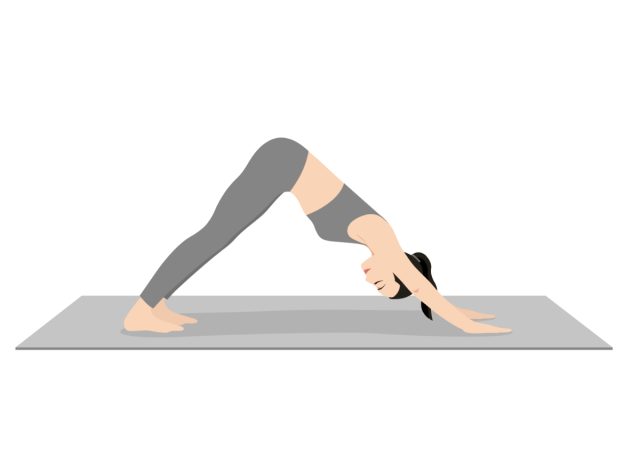Getting older comes with plenty of ups and downs. One day, you may feel on top of the world, while the next day, you wonder when your body has changed so rapidly. Fortunately, understanding healthy aging could be as simple as checking your mobility.
Mobility tests offer valuable insights into your overall health and well-being, revealing how well your body is aging.
“Mobility is simply the quality of movement throughout a given range,” says Mike Masi, CPT, a certified personal trainer at Garage Gym Reviews. “It can be used to examine joints individually or as a confluence of muscle action, such as during a squat, hinge, or row.”
Mobility isn’t just about movement; it reflects your body’s flexibility, strength, and balance. According to the National Institutes of Health, maintaining mobility as you age is a non-negotiable for living independently, preventing falls, and staying active.
We asked Masi for 10 effective mobility tests to help you pinpoint areas of strength and weakness. These tests provide a snapshot of your current mobility level and help you track your progress over time, offering valuable insights into how well you’re aging.
The best part is these tests require minimal equipment and can be easily incorporated into your routine. If you’re ready to take control of your health and thrive in your golden years, read on for 10 mobility tests to determine whether you’re aging well. When you’re finished, check out How To Effectively Build Muscle As You Age.
Timed Up and Go (TUG) Test
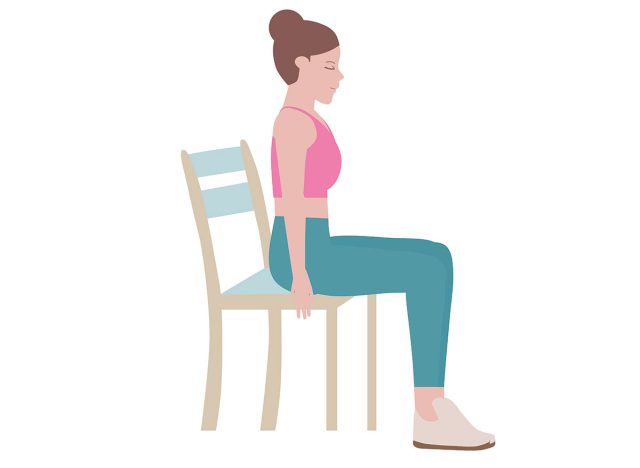

To perform this mobility test, sit in a chair with your back firmly against the back and your arms on the armrests. Masi tells us, “Start a stopwatch, then stand up from the chair, walk three meters, turn around, walk back to the chair, and sit down again. Stop the stopwatch as soon as you sit down.”
Masi explains that you can interpret the TUG test results based on the following time criteria:
- Under 10 seconds: Generally indicates good mobility, suggesting you can move freely without significant risk of falls.
- 10 to 20 seconds: This is typical for healthy adults who are independent in their daily living activities. However, a time over 20 seconds suggests impaired mobility, balance issues, or other conditions affecting physical function. This score is associated with a higher risk of falls and may indicate the need for further evaluation or intervention.
6-Minute Walk Test (6MWT)
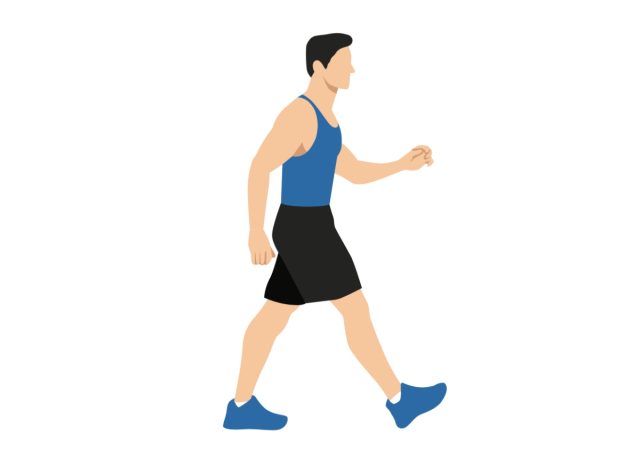

For this test, you’ll need a flat, straight walking area, typically 30 meters long, a stopwatch, and cones or markers to indicate the turnaround points. “Start by walking as far as possible in six minutes, beginning at your natural pace from the starting line,” says Masi. “You can slow down, stop, and rest as needed, but the stopwatch continues running. Turn around the markers at each end of the course and continue walking until six minutes have elapsed. Record the distance covered at the end of six minutes.”
See also 5 Best Conditioning Workouts To Improve Your Physical Fitness
Here’s how to interpret your results, according to Masi:
- Less than 350 meters: Suggests limited functional capacity and is often associated with higher morbidity and mortality rates in older adults and patients with chronic conditions.
- 350 to 500 meters: This may indicate moderate impairment in physical condition, often seen in older adults with chronic conditions or reduced physical activity levels.
- Over 500 meters: Generally indicates better functional status and endurance levels.
5 Times Sit-to-Stand Test (5xSST)
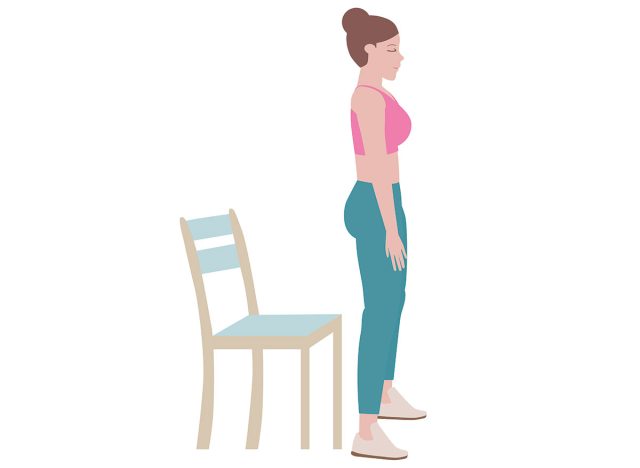

Find a sturdy chair with a back, no armrests, and a standard seat height. “Sit in the middle of the chair with your feet flat on the floor and arms crossed over your chest. Start a stopwatch, stand up fully, then sit back down, repeating this motion five times as quickly as possible without using your arms for support. Stop the stopwatch when you sit down on the fifth repetition and record the total time taken to complete the five repetitions,” instructs Masi.
Interpret your timed results based on the following:
- Under 10 seconds: Generally considered an excellent score, indicating good lower limb strength and balance.
- 10 to 15 seconds: Typical for healthy adults and suggests adequate functional mobility.
- 15 to 20 seconds: May indicate some level of functional impairment. Older adults with this range of scores may experience difficulty with daily activities that require lower body strength and balance.
- Over 20 seconds: Suggests significant difficulty with functional mobility. Masi says those who take longer than 20 seconds are at an increased risk for falls and may require intervention or rehabilitation.
Chair Sit and Reach Test
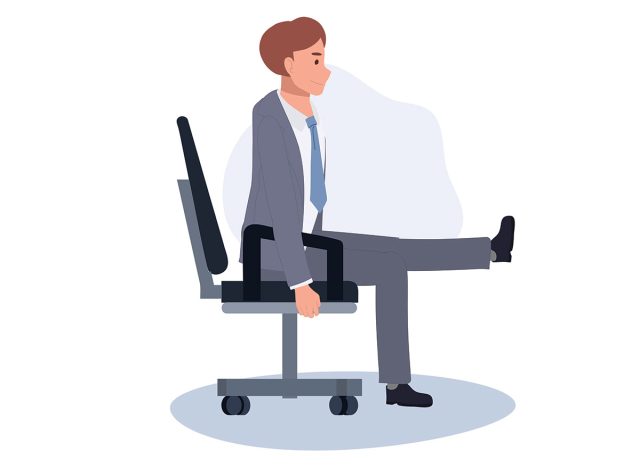

For this test, you’ll need a chair and a ruler or measuring tape. Masi says, “Sit at the edge of a stable chair with one leg extended straight forward and one foot flexed, while the other foot remains flat on the floor beside the chair. Slowly lean forward from your hips, reaching toward the toes of the extended foot with both hands. Measure the furthest point reached, either the toes, beyond the toes, or before the toes, using the ruler or measuring tape placed on the extended leg. Repeat the test three times for consistency, and record the best score of the three attempts.”
Here’s how to read your results:
- Beyond the toes (>0 cm): Indicates good lower body and lumbar flexibility.
- To the toes (0 cm): This represents average flexibility, which is generally sufficient for most daily activities.
- Before the toes (<0 cm): Indicates limited flexibility, which may contribute to a higher risk of lower back pain, muscle strains, and functional limitations in activities involving bending and lifting.
Four Square Step Test (FSST)
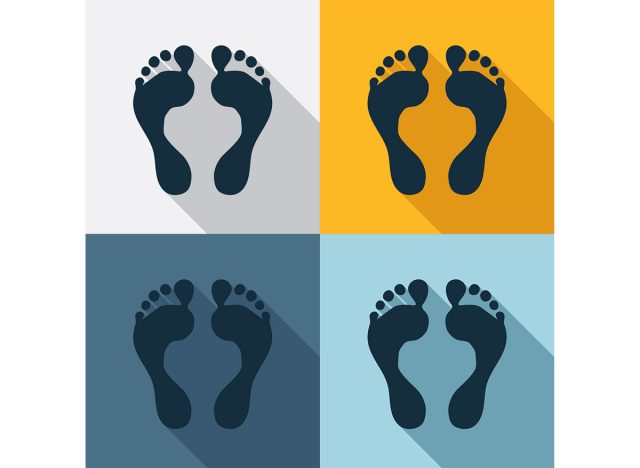

Make four squares marked on the ground, each measuring 15 by 15 inches, arranged in a large square pattern. “Stand in one of the squares. Step as quickly as possible into each square in a specific sequence without touching the lines, first clockwise, then counterclockwise. This sequence involves stepping forward, sideways, backward, and then sideways into the initial square. Complete both forward and backward sequences. Timing starts when you initiate the first step and stops when you return to the initial square. Perform the test twice and record the best time,” says Masi.
See also 10 Simple Exercises To Improve Your Balance & Coordination
Here’s what your results could mean:
- Under 10 seconds: Typically considered excellent, indicating good dynamic balance and mobility.
- 10 to 15 seconds: Average performance, generally sufficient for safe, effective mobility.
- More than 15 seconds: Suggests potential mobility and balance issues. Scores in this range may indicate an increased risk of falling, especially in elderly populations, according to Masi.
Single Leg Stance Test
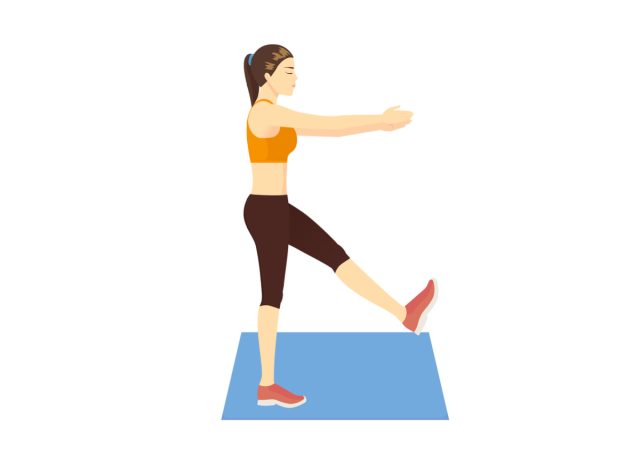

No equipment is required for this test, although a stopwatch or timer is useful for time tracking. “Stand on a flat, non-slip surface with enough space around to prevent injury if you lose balance,” says Masi. “Lift one foot off the ground, either by bending the knee or lifting the leg straight out in front. Maintain balance on the standing leg without supporting yourself with your hands and without your legs touching each other. Start the timer as soon as the foot is lifted and stop when the foot touches the ground or if you grab a support or move the stance foot to maintain balance. Repeat the test with both legs, testing each leg at least twice for consistency.”
- More than 30 seconds: Indicates excellent balance. Being able to stand on one leg for over 30 seconds generally indicates good balance and lower body strength.
- 10 to 30 seconds: Indicates average balance. This is typically observed in healthy adults. Performance in this range may indicate satisfactory but not optimal balance.
- Less than 10 seconds: Indicates poor balance. Masi tells us scores below 10 seconds can indicate a high risk of falling and generally suggest significant balance impairments.
Functional Reach Test
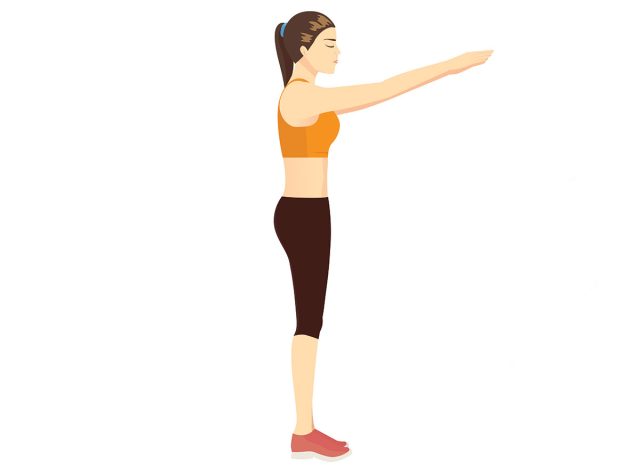

Grab a yardstick or a measuring tape mounted on a wall at shoulder height while standing. “Stand next to the wall with your feet slightly apart and shoulder perpendicular to the wall. Raise the arm that is closest to the wall to shoulder height, making a fist. Without taking a step, lean forward as far as possible, pushing a marker along the measuring device with your fist. Note the initial position of the fist at shoulder height and the end position. The difference between these two marks gives the functional reach. Repeat the test three times, and record the best score of the three attempts.”
- Greater than 10 inches: Indicates good balance and stability. Individuals with this reach distance are typically at a lower risk of falls.
- Six to 10 inches: Indicates moderate functional reach. Those in this range may have some balance impairments and could be at a moderate risk of falling.
- Less than six inches: Suggests significant balance limitations. Scores in this range are associated with a higher risk of falling and generally indicate poor functional stability, says Masi.
See also Here’s How Long To Work Out When ‘Exercise Stacking’
Step Test
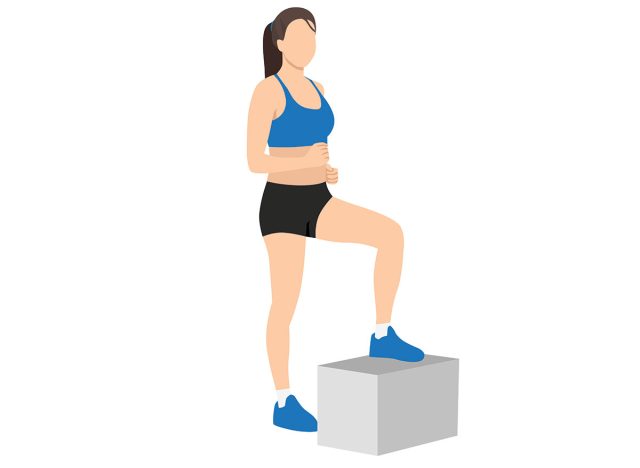

For this mobility test you’ll need a sturdy step or platform, typically about 7.5 inches high, and a stopwatch or timer. Masi says, “Stand in front of the step with both feet on the ground. Step up with one foot and then the other to stand on the platform, and then step down again, reversing the foot order. Repeat this action for 15 seconds, and count the total number of completed steps. The test can also be performed unilaterally, with one foot staying on the step for the entire 15 seconds. Repeat the test to verify the consistency of the results.”
Here’s how to make sense of your results:
- More than 15 steps in 15 seconds: Above average balance, coordination, and lower limb function.
- 10 to 15 steps in 15 seconds: Average for healthy older adults. Masi says this level implies sufficient physical ability for daily activities but may warrant monitoring if declines are noted over time.
- Less than 10 steps in 15 seconds: Below average balance and may indicate mobility issues.
Back Scratch Test
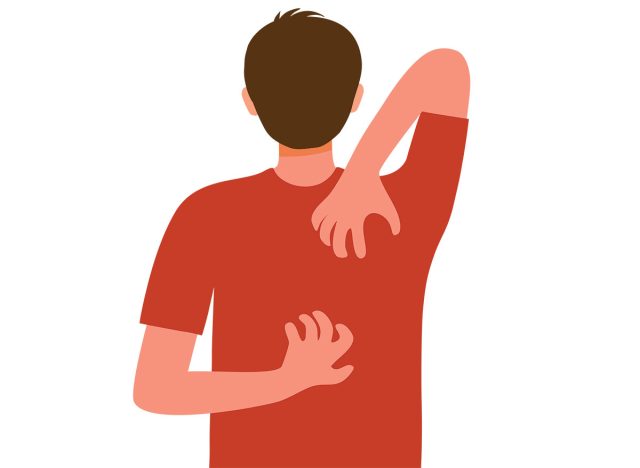

To perform this test, Masi says, “Reach one hand over your opposite shoulder and down the back while reaching the other hand up the middle of the back from below, attempting to touch or overlap their fingertips between the shoulder blades. The test is performed with both arms, one as the upper arm and the other as the lower arm, then the roles of the arms are reversed. If there is a gap between the fingertips, it is measured; if the fingertips overlap, the degree of overlap is measured.
- Fingertips overlap or are very close together (less than 2 cm apart): Indicates excellent upper body flexibility.
- Fingertips are 2 to 5 cm apart: Average flexibility, sufficient for most daily activities.
- Fingertips more than 5 cm apart: Suggests limited flexibility, which may impair the ability to perform daily tasks involving the use of arms overhead or behind the body.
Lateral Step Over Test
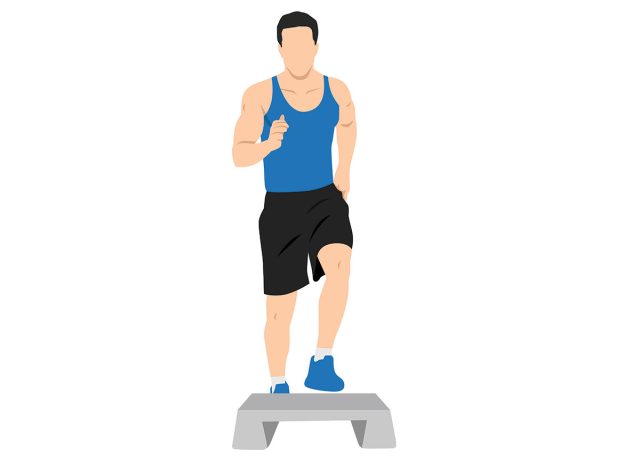

For this test, you’ll need a small hurdle or bar set, a stopwatch, and a flat, non-slip surface. “Stand alongside the hurdle, facing forward, with the hurdle to one side. Step sideways over the hurdle, moving both feet quickly and consecutively over the bar without touching it. Step back over the hurdle to the starting position, completing one cycle. Count the number of complete cycles completed in 20 seconds. Perform the test on both sides to assess the agility and coordination of each leg,” explains Masi.
- More than 15 cycles in 20 seconds: Indicates good lateral agility, coordination, and neuromuscular control.
- 10 to 15 cycles in 20 seconds: Typical for healthy adults. Indicates adequate lateral movement capability but may benefit from targeted training to improve performance and reduce injury risk.
- Fewer than 10 cycles in 20 seconds: May indicate poor lateral agility, coordination, or neuromuscular control, according to Masi.






